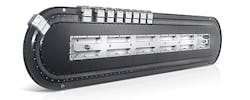Advances in motion control technologies having been changing the game in material handling across industries. OEM business factors driving advances from automation technology suppliers include demands from end users to increase production without expanding the footprint or energy requirements of equipment.
The advances made in the past few years are also driving a feedback loop of continuous product improvement at technology companies, who are striving to supply products and systems that enable manufacturers to more easily produce different product sizes with quick changeovers and to apply Industry 4.0 concepts as part of a move toward achieving a batch size of one.
Recently, we connected with Jeff Johnson, the mechatronics product manager at Beckhoff Automation, to learn how Beckhoff is adapting its linear transport technologies to address OEM and end user demands around material handling. In our conversation, Johnson focused on Beckhoff’s XTS (eXtended Transport System) linear transport system.
“Combining rotary and linear systems in a single mechatronic system with a small number of components—an industrial PC, cable-free movers, guide rails, and motor modules—we can reduce the footprint of the machine,” said Johnson. “With the five years of experience we now have with XTS deployments, we’ve expanded our available track options to 45. And our track management capability means movers can be transferred between tracks on the fly.”
Johnson noted that the available XTS track options include one with plus 22.5-degree curves for an unlimited number of track geometries. "We can also do circles, S-curves, and squares," he said. "Any geometry you need can be designed by combining different motor modules.”
HepcoMotion also offers its GFX track rail system for use with XTS to handle larger loads and provide a longer service life.
Reflecting on how OEM material handling requirements have been driving changes in the technology supplier industry over the past few years, Johnson said that most of Beckhoff’s past communication with OEMs tended to take place only with the OEM’s control engineers. These conversations were mostly focused on speed and torque factors and did not involve a lot of interaction. Now we’re seeing greater collaboration among OEM mechanical, electrical, and software engineers.”
These increased levels of input led Beckhoff to design XTS so that each mover can move independently or be synchronized in groups. “Constant force can also be applied across the movers and the movers have built-in collision avoidance, which makes programming easier for control engineers,” said Johnson. “The tooling on top of the XTS movers allows us to clamp ports, open and close bags, cap bottles or simply move parts down the line. The flexibility of XTS allows designers to consider what they want to accomplish before starting their machinery designs. XTS is not just a substitute for lower-cost solutions like chain-driven systems with lugs and buckets, it’s a fundamentally different way to approach material handling transport processes.”
Supporting Johnson's claim are capabilities built-in to XTS, such as the ability to double or triple slower processes to speed up the clock cycle of the machine, thereby avoiding the problem of the slowest process dictating a machine’s duty cycle. “XTS also allows us to buffer parts between slow and fast processes to make the machine more efficient,” he added. “And our continuous loop of movers allows for faster cycle times, as movers don’t have to go backwards to catch the next product.”
To hear the full interview with Johnson, listen to the podcast.

